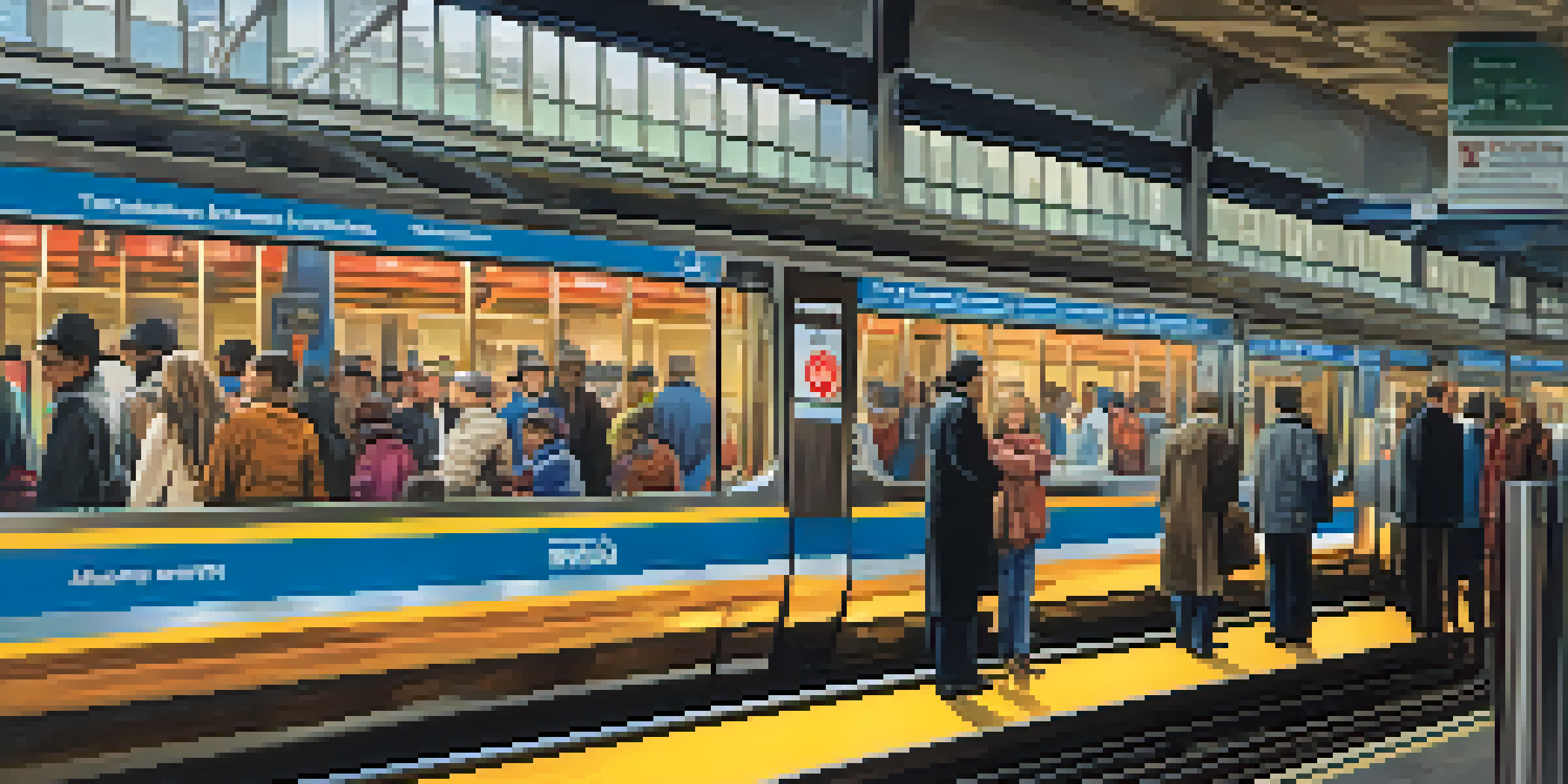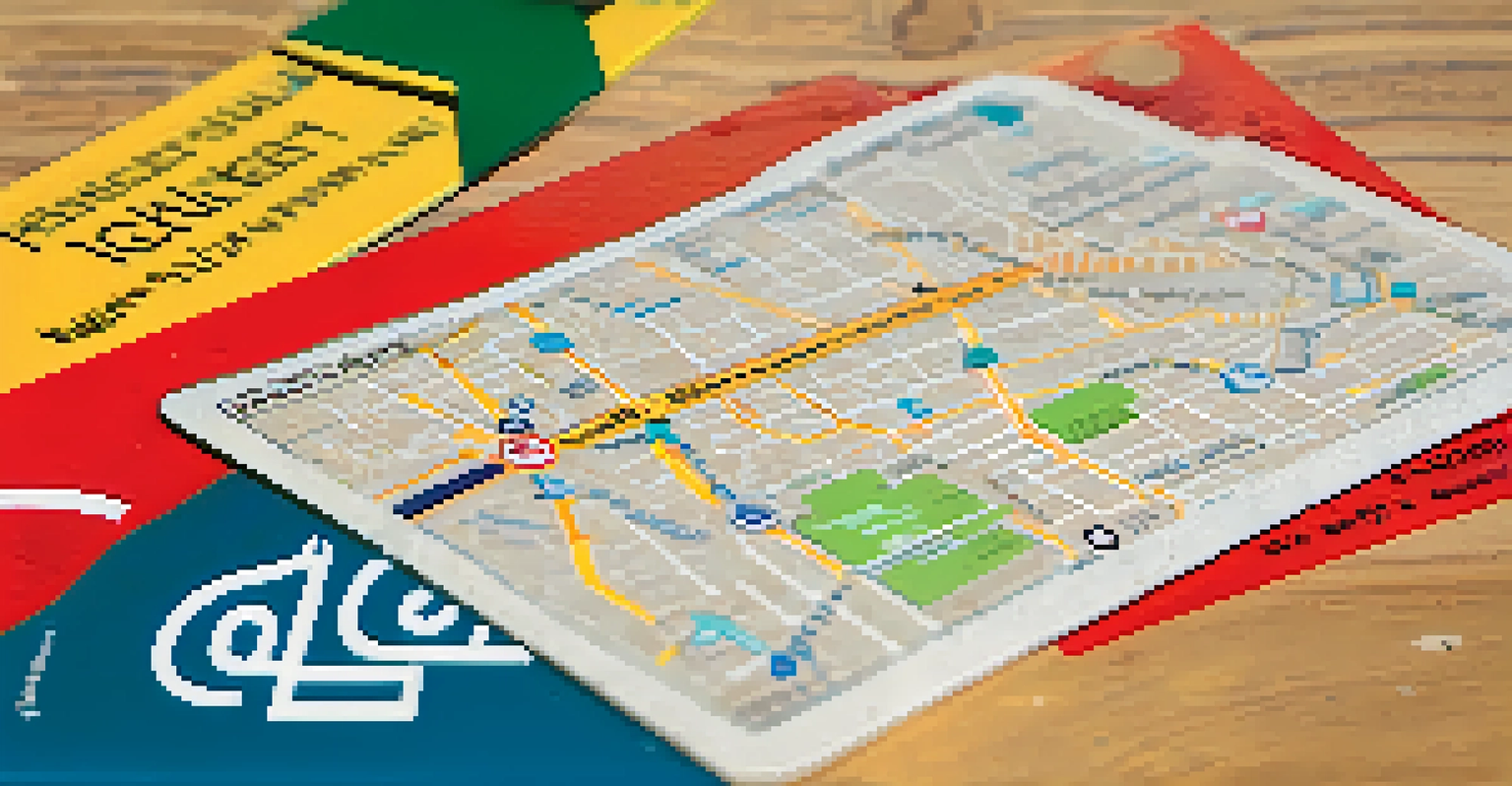Massachusetts Public Transportation: A Comprehensive Overview

Introduction to Massachusetts Public Transportation System
Massachusetts boasts a robust public transportation system that serves millions of residents and visitors. From bustling Boston to the quieter suburbs, this network includes buses, subways, trains, and ferries, making it easier to navigate the state. Understanding how each component fits together can help you make the most of your travel experience.
Public transportation is a lifeline for many residents, providing access to jobs, education, and essential services.
At the heart of this system is the Massachusetts Bay Transportation Authority (MBTA), often referred to as the 'T'. This agency oversees the majority of public transit services in the Greater Boston area, providing reliable options for commuters and tourists alike. With a history dating back to the 19th century, the T has evolved into a crucial part of daily life for many.
Whether you're a local or just visiting, getting acquainted with Massachusetts' public transportation can save you time and money. In the sections that follow, we'll explore the different modes of transport available, their pricing structures, and tips for navigating the system efficiently.
Overview of the Massachusetts Bay Transportation Authority (MBTA)
The MBTA operates an extensive network consisting of subways, buses, commuter rail, and ferries. The subway system, known as the 'T', is particularly famous for its color-coded lines that make navigating Boston easy for riders. Each mode of transport plays a unique role in connecting residents to their destinations.

One of the standout features of the MBTA is its accessibility. With a commitment to serving all residents, many stations are equipped with elevators and ramps. Additionally, the MBTA offers services for those with disabilities, ensuring that everyone can make use of public transport.
Comprehensive MBTA Services
The Massachusetts Bay Transportation Authority (MBTA) operates a diverse network of subways, buses, commuter rails, and ferries, ensuring connectivity across the state.
In recent years, the MBTA has also made strides in expanding its services and improving efficiency. From introducing new routes to enhancing technology for real-time updates, the authority is dedicated to meeting the needs of a growing population and adapting to changing travel patterns.
Types of Public Transportation Available
Massachusetts offers a variety of public transportation options catering to different needs. The subway system is perfect for urban commuters, while buses extend service to areas not covered by the T. Commuter rail services connect suburban areas to the city, making it a great choice for those living farther out.
The best way to get around a city is to use its public transportation system; it offers a glimpse into the life of its residents.
Ferries also play a significant role, particularly for those traveling to and from the Boston Harbor Islands and along the coastline. These scenic rides not only provide transportation but also a unique way to experience the beauty of Massachusetts from the water.
With options ranging from traditional rail services to modern buses and ferries, residents and visitors can choose the best mode of transport for their journeys. This variety ensures that everyone can find a convenient way to get around the state.
Understanding MBTA Ticketing and Fares
Navigating the fare structure of the MBTA is crucial for any user of the system. The 'CharlieCard' and 'CharlieTicket' are the two primary methods for purchasing rides, with the CharlieCard offering a convenient way to load and store funds. Understanding how to use these options can help you save money on your travels.
Fares vary depending on the mode of transport and the distance traveled, but the MBTA provides various discounts, including student and senior rates. It's essential to check the fare schedule to ensure you’re selecting the most cost-effective option for your trip.
Affordable Ticketing Options
Understanding the MBTA's fare structure and ticketing options, including the CharlieCard and discounts, can help users save money while navigating the system.
In addition to single-ride tickets, the MBTA offers weekly and monthly passes, which can be beneficial for frequent travelers. By planning ahead and choosing the right ticket, you can navigate the system without breaking the bank.
Key Routes and Destinations in Massachusetts
When it comes to traveling around Massachusetts, certain routes stand out for their popularity and significance. The Red Line, for example, connects key areas such as Alewife and Braintree, making it essential for daily commuters. Understanding these major routes can help you navigate the system more effectively.
In addition to the Red Line, the Green Line and Orange Line also serve important neighborhoods and attractions, like the Boston Common and Fenway Park. Knowing which lines to take can enhance your experience, allowing for easy access to the city's hotspots.
Moreover, the commuter rail connects cities like Worcester, Lowell, and Fitchburg to Boston, making it a practical option for those traveling from surrounding areas. Familiarizing yourself with these key routes ensures you can reach your desired destinations without hassle.
Accessibility Features of Massachusetts Public Transit
Massachusetts is committed to making public transportation accessible to all. The MBTA has implemented various features to assist riders with disabilities, including elevators, ramps, and trained personnel to provide support. This dedication to inclusivity ensures that everyone can use the system comfortably.
Additionally, many buses are equipped with low floors and designated seating areas for those in need. The MBTA also offers paratransit services, allowing individuals who cannot use standard public transport to still have access to essential travel options.
Focus on Accessibility and Inclusion
Massachusetts public transportation prioritizes accessibility, offering features like elevators and paratransit services to accommodate all riders.
By prioritizing accessibility, Massachusetts public transportation not only serves a broader audience but also promotes independence and mobility for all residents. This thoughtful approach reflects the state's commitment to creating an inclusive environment for everyone.
Future Developments in Massachusetts Public Transportation
As Massachusetts continues to grow, so does its public transportation system. Recent discussions have focused on expanding services, increasing efficiency, and integrating new technologies. These improvements aim to make travel in and around the state even more convenient for users.
One exciting development is the push towards sustainable transportation options. Initiatives like electric buses and enhanced bike-sharing programs are becoming more prevalent, aligning with the state’s environmental goals. These innovations not only reduce carbon footprints but also encourage a healthier lifestyle.

Looking ahead, the MBTA is also exploring ways to modernize its fare collection systems and improve real-time tracking capabilities. As these projects progress, they promise to enhance the overall user experience, making public transportation an even more attractive option for residents and visitors alike.